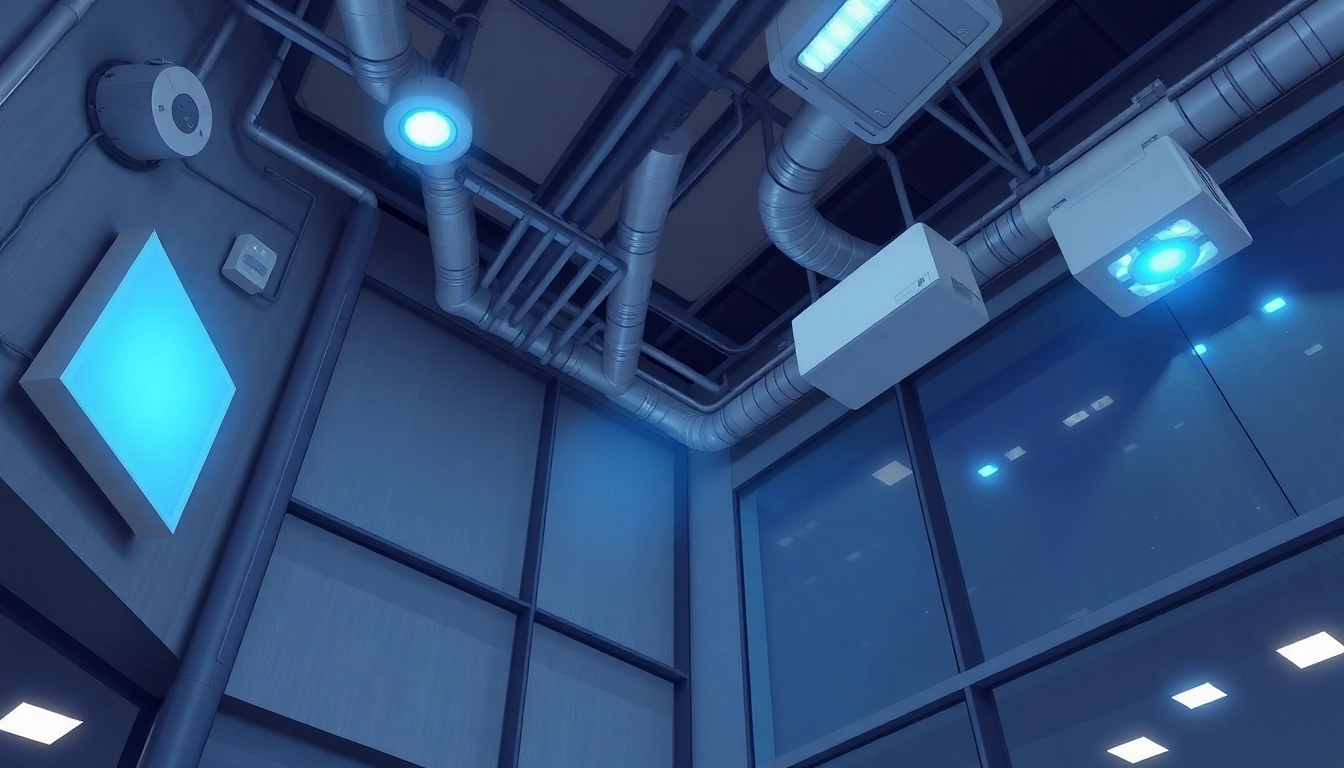Understanding Commercial Leak Detection Basics
What is Commercial Leak Detection?
Commercial leak detection refers to the process of identifying leaks in commercial buildings, which can include anything from small offices to large industrial facilities. These leaks can be caused by a variety of factors, including aging infrastructure, rapid temperature changes, and improper maintenance. The primary goal of leak detection is to locate and resolve leaks before they lead to significant property damage or operational disruptions. In modern commercial settings, this often involves a combination of advanced technology and traditional methods to ensure comprehensive monitoring and swift action.
Importance of Timely Leak Detection
Timely leak detection is crucial for several reasons. First and foremost, leaks can lead to extensive water damage, which not only harms the structural integrity of buildings but can also disrupt business operations. Early detection can prevent costly repairs and mitigate potential downtime. Furthermore, leaks can contribute to mold growth, which poses serious health risks to employees and customers alike. Maintaining Commercial Leak Detection efforts can also lead to reductions in water waste, aligning with sustainability goals and potentially lowering utility costs.
Key Components of a Leak Detection System
A robust leak detection system typically includes several key components: sensors, alarms, and monitoring systems. Sensors are strategically placed throughout the property to detect moisture levels or water flow changes. Alarms alert maintenance personnel in real time if a leak is detected, enabling prompt response. Monitoring systems can provide data analytics and reports, helping businesses understand their water use patterns and identify potential problem areas before they escalate into leaks.
Common Types of Leaks in Commercial Properties
Pipes and Plumbing Systems
Pipes and plumbing systems are common sources of leaks in commercial properties. Over time, pipes can corrode or become damaged due to external factors or internal pressure changes. Common leaks can occur at joints, valves, and any fittings. Regular inspection of plumbing systems is important to ensure they are functioning properly and to catch any potential leaks early.
Roof and Surface Leaks
Roof leaks are another significant risk for commercial buildings, particularly those with flat roofs. Weather exposure, structural movement, and poor installation can contribute to deterioration of roofing materials, leading to leaks. Regular maintenance and inspections can help identify signs of wear and tear before they become major issues.
Basement and Flooding Issues
Commercial properties located in flood-prone areas or with basements are particularly vulnerable to water intrusion. Proper drainage systems and sump pumps are essential for preventing flooding issues. Even minor leaks from basement walls can escalate into larger issues if not addressed promptly, so maintaining these areas can be critical for overall property health.
Advanced Technology in Commercial Leak Detection
Wireless Leak Detection Solutions
Wireless leak detection technology has revolutionized how businesses monitor for leaks. These systems typically use sensors that communicate wirelessly with a central monitoring unit. This allows for quicker installation and easier scalability compared to traditional wired systems. Wireless solutions can provide real-time data and alerts, ensuring that maintenance teams can act quickly when leaks are detected.
Automation and Smart Systems
Integration of smart technology, such as IoT (Internet of Things) devices, has also enhanced leak detection capabilities. Automated systems can adjust water usage based on real-time data and even shut off water supply automatically in the event of a significant leak. These smart systems allow for advanced analytics and remote monitoring, giving property managers more control over water management.
Real-Time Monitoring Applications
Many commercial leak detection systems now offer real-time monitoring applications that can be accessed via smartphones or tablets. These apps provide instant alerts, system status updates, and performance metrics, allowing for proactive management. Property managers can receive notifications about system performance, and regular maintenance reminders can help ensure that leak detection systems are operating effectively.
Best Practices for Implementing Commercial Leak Detection
Regular Maintenance and Inspections
Establishing a schedule for regular inspections and maintenance of plumbing and leak detection systems is essential. Frequent checks can help identify potential problems early, before they turn into significant leaks. Engaging professional services for these inspections can provide property owners with peace of mind, knowing that experts are evaluating their systems.
Utilizing Professional Services
While some companies may attempt to manage their leak detection in-house, utilizing professional leak detection services can significantly enhance effectiveness. Professionals bring specialized training, experience, and access to advanced technology that can lead to a quicker resolution of potential issues.
Integrating Systems with Existing Infrastructure
When implementing new leak detection systems, it’s essential to ensure integration with existing infrastructure. This includes compatibility with current plumbing, alarm systems, and building management systems. A seamless integration helps to maximize efficiency and effectiveness while reducing the risk of operational disruptions.
Measuring Effectiveness of Your Commercial Leak Detection
Analyzing Data and Reports
To assess the effectiveness of a leak detection system, it is important to continuously analyze data collected by the system. Maintenance reports, incident reports, and water usage analytics can reveal trends and patterns that help property managers understand the system’s performance. This analysis can inform ongoing improvements and adjustments.
Feedback and Performance Metrics
Collecting feedback from maintenance personnel and reporting team members who interact with the systems can provide valuable insights. Performance metrics—such as the number of detected leaks, the response time to alerts, and successful resolutions—can be tracked to measure the system’s overall success. Adjusting strategies based on this feedback can improve future performance.
Continuous Improvement Strategies
Finally, implementing a culture of continuous improvement is vital for maintaining an effective leak detection system. Regular training sessions for staff, updates on industry advancements, and adopting new technologies as they become available can enhance the overall effectiveness of leak detection efforts. Engaging with industry best practices and maintaining a proactive approach ensures ongoing effectiveness in commercial leak detection.
